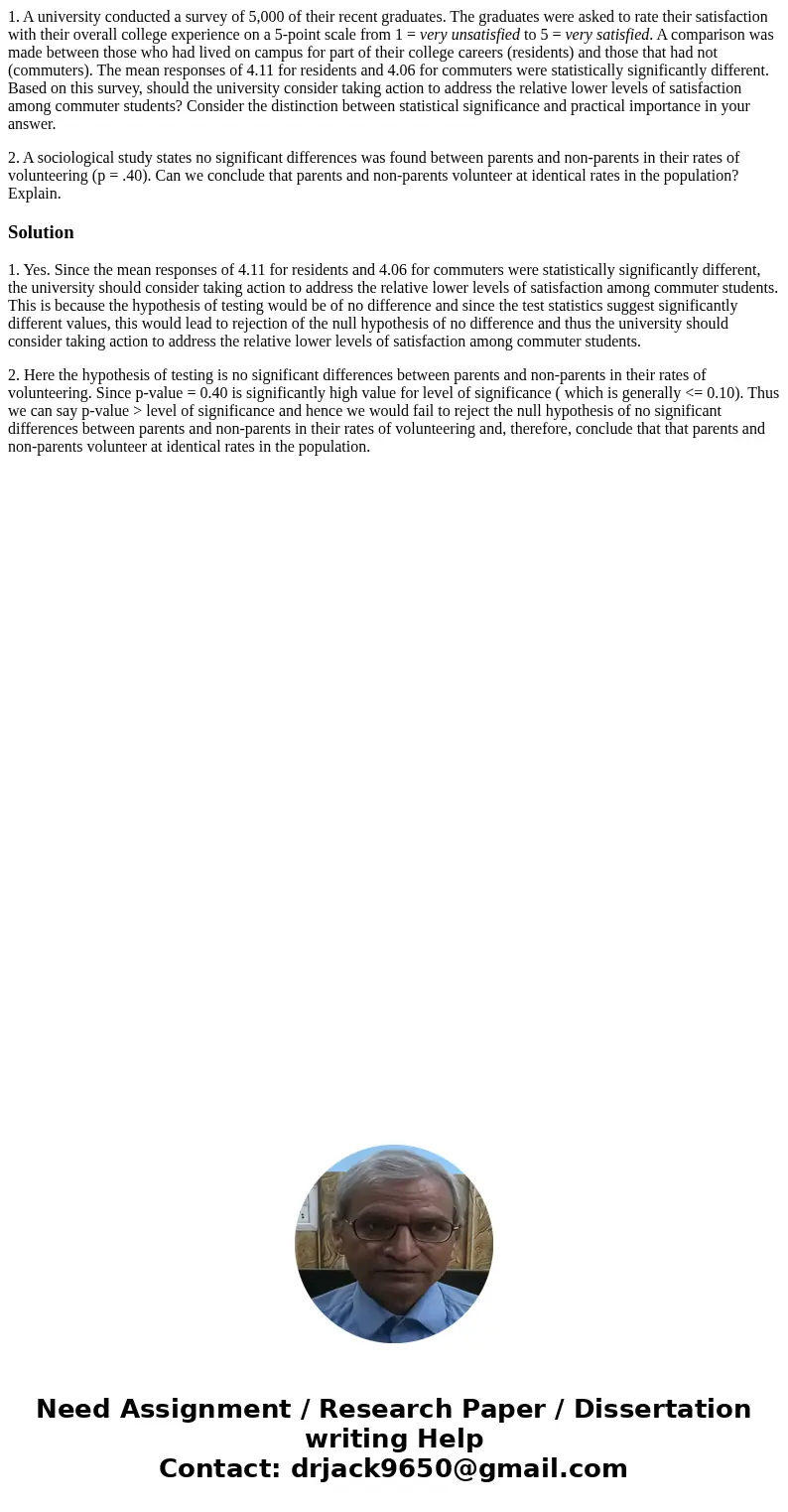1 A university conducted a survey of 5000 of their recent gr
1. A university conducted a survey of 5,000 of their recent graduates. The graduates were asked to rate their satisfaction with their overall college experience on a 5-point scale from 1 = very unsatisfied to 5 = very satisfied. A comparison was made between those who had lived on campus for part of their college careers (residents) and those that had not (commuters). The mean responses of 4.11 for residents and 4.06 for commuters were statistically significantly different. Based on this survey, should the university consider taking action to address the relative lower levels of satisfaction among commuter students? Consider the distinction between statistical significance and practical importance in your answer.
2. A sociological study states no significant differences was found between parents and non-parents in their rates of volunteering (p = .40). Can we conclude that parents and non-parents volunteer at identical rates in the population? Explain.
Solution
1. Yes. Since the mean responses of 4.11 for residents and 4.06 for commuters were statistically significantly different, the university should consider taking action to address the relative lower levels of satisfaction among commuter students. This is because the hypothesis of testing would be of no difference and since the test statistics suggest significantly different values, this would lead to rejection of the null hypothesis of no difference and thus the university should consider taking action to address the relative lower levels of satisfaction among commuter students.
2. Here the hypothesis of testing is no significant differences between parents and non-parents in their rates of volunteering. Since p-value = 0.40 is significantly high value for level of significance ( which is generally <= 0.10). Thus we can say p-value > level of significance and hence we would fail to reject the null hypothesis of no significant differences between parents and non-parents in their rates of volunteering and, therefore, conclude that that parents and non-parents volunteer at identical rates in the population.

 Homework Sourse
Homework Sourse